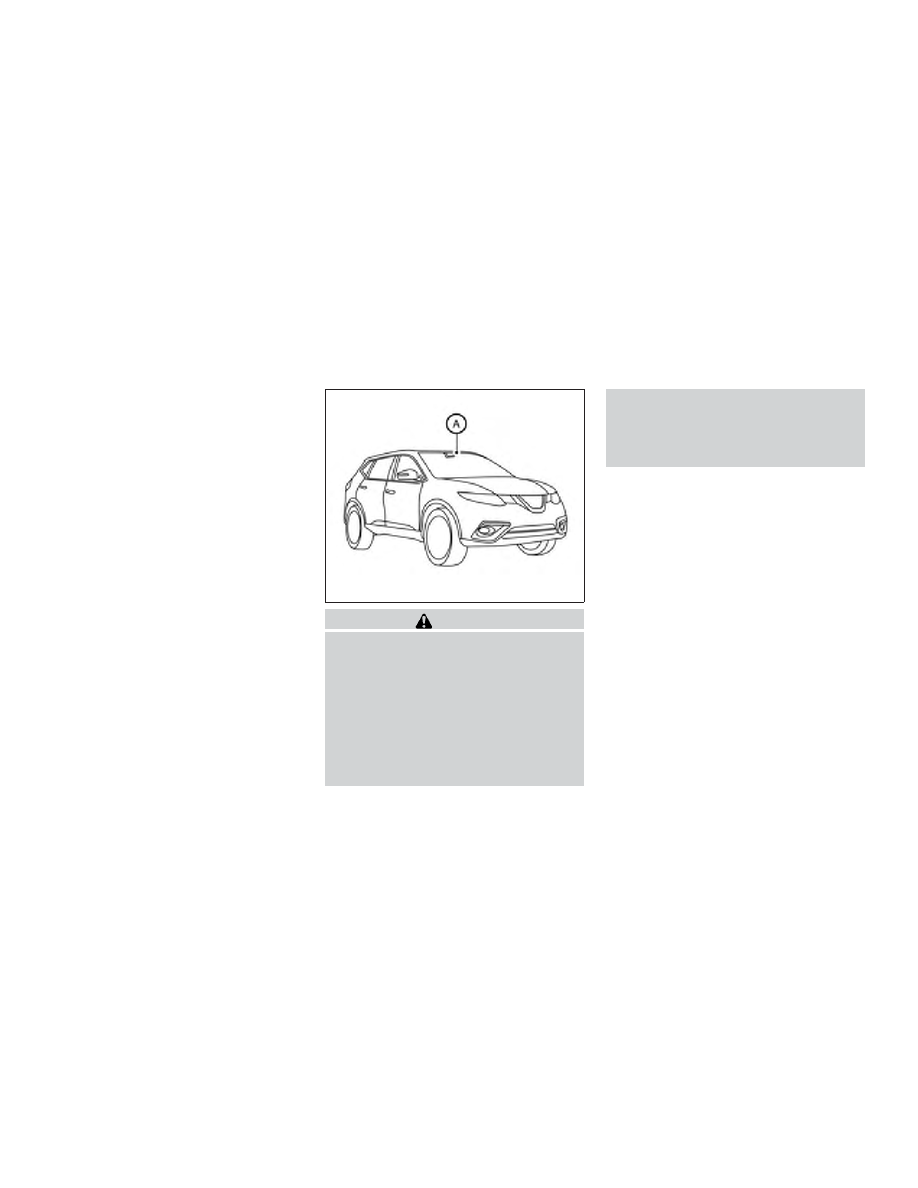Nissan Rogue (2020 year). Manual - part 19

∙ Do not place reflective materials, such
as white paper or a mirror, on the instru-
ment panel. The reflection of sunlight
may adversely affect the camera unit’s
capability of detecting the lane mark-
ers.
∙ Do not strike or damage the areas
around the camera unit. Do not touch
the camera lens or remove the screw
located on the camera unit. If the cam-
era unit is damaged due to an accident,
it is recommended that you visit a
NISSAN dealer.
WARNING
Failure to follow the warnings and in-
structions for proper use of the I-LI sys-
tem could result in serious injury or
death.
∙ The I-LI system will not steer the ve-
hicle or prevent loss of control. It is the
driver’s responsibility to stay alert,
drive safely, keep the vehicle in the
traveling lane, and be in control of the
vehicle at all times.
∙ The I-LI system is primarily intended
for use on well-developed freeways or
highways. It may not detect the lane
markers in certain road, weather, or
driving conditions.
The I-LI system must be turned on with the
dynamic driver assistance switch (for ve-
hicles without ProPILOT Assist) or the Pro-
PILOT Assist switch (for vehicles with ProPI-
LOT Assist) on the steering wheel, every
time the ignition is placed in the ON posi-
tion.
The I-LI system will operate when the ve-
hicle is driven at speeds of approximately
37 mph (60 km/h) and above, and only
when the lane markings are clearly visible
on the road.
The I-LI system warns the driver when the
vehicle has left the center of the traveling
lane with an indicator and chime. The sys-
tem helps assist the driver to return the
vehicle to the center of the traveling lane by
applying the brakes to the left or right
wheels individually (for a short period of
time).
The I-LI system monitors the lane markers
on the traveling lane using the camera unit
䊊
A
located above the inside mirror.
LSD2795
INTELLIGENT LANE INTERVENTION
(I-LI) (if so equipped)
5-40
Starting and driving